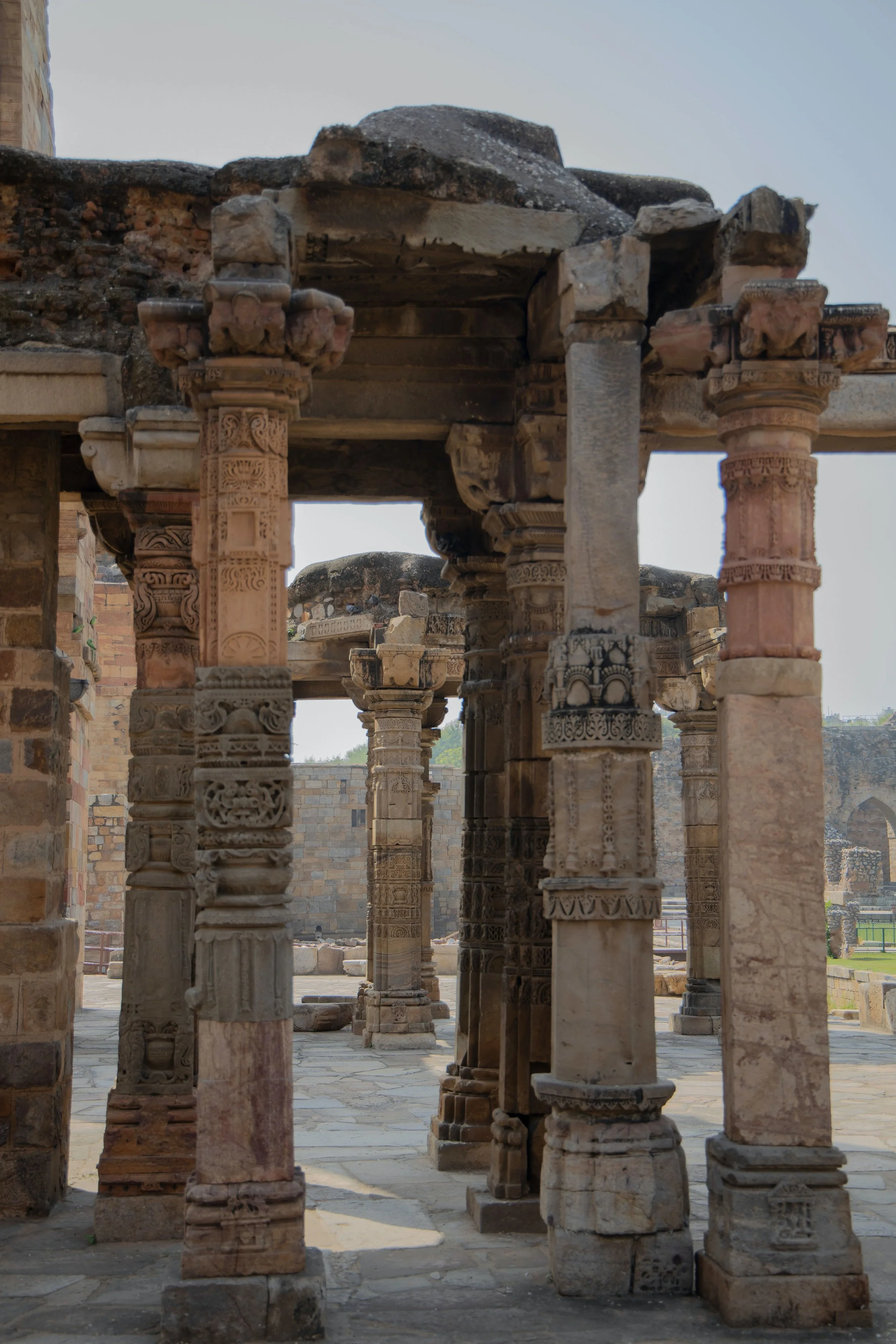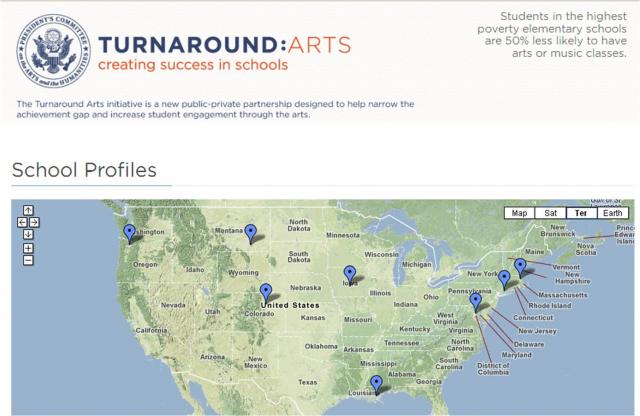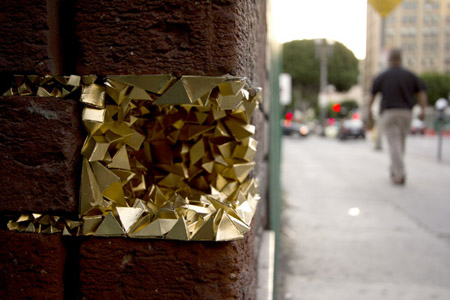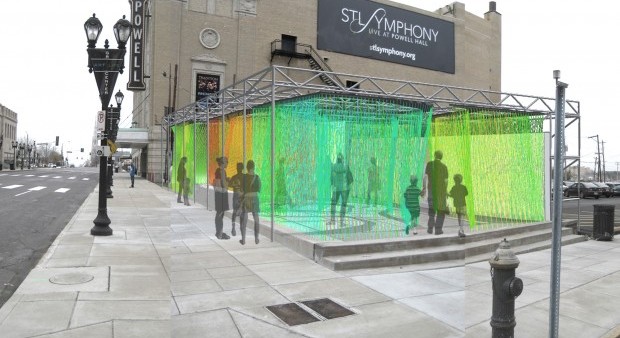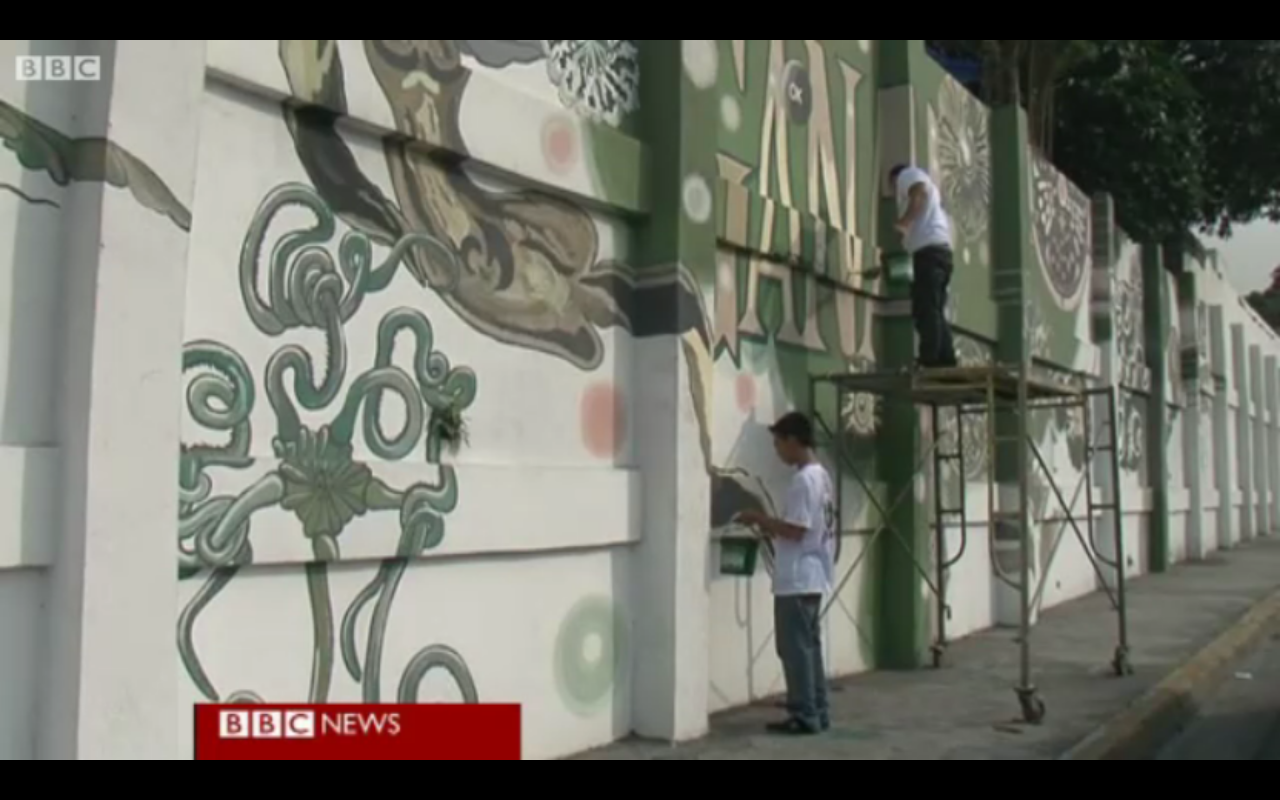This article analyzes Ireland’s emerging position as a global cultural policy case study, focusing on the Basic Income for the Arts (BIA) program and its place within the national framework Culture 2025. While Ireland’s consensus-driven political system, strong arts advocacy networks, and history of support for artist income have enabled an ambitious, research-oriented basic income pilot, the article highlights deeper tensions within cultural policymaking. Drawing on Stephen Hadley’s concept of “cultural policy realism,” it argues that Ireland’s policies—despite their novelty—remain rooted in traditional, instrumentalist views of culture as an economic engine and national branding tool. By contrasting democratization of culture with cultural democracy, the piece situates Ireland’s model between innovation and reversion, emphasizing the need for sustained experimentation, critical evaluation, and more genuinely democratic approaches to cultural support.
The Key Role of VR in Preserving Cultural Heritage
Virtual reality (VR) has quickly become a mainstay for exhibiting arts and cultural organizations. When looking at it as a concept, “VR has the potential to simulate imaginative and existing physical environments along with their processes. The simulations can be tuned to a highest level of multisensorial realism in order to affect users' visual, auditory, tactile, vestibular, and even olfactory and gustatory senses.” But what does it mean to museums and cultural organizations, and how can it help the arts?
Technology Connecting ICH Motivations and Safeguarding Responsibilities
In an increasingly virtual work environment, digital technology is becoming a standard tool for creative industries. Cultural heritage work is no different. A broad variety of tools are being used to safeguard cultural heritage sites and objects, from partnering 3D modeling, drones and artificial intelligence for a preservation project on the Great Wall of China, to virtual reality being used to replicate and recreate the Dunhuang Caves. With the growing attention for intangible cultural heritage (ICH), it is important to explore what digital tools are being used for fulfilling intangible cultural heritage safeguarding responsibilities and what opportunities exist for other projects and their practitioners.
Intangible Cultural Heritage: Context and Digital Approaches for Safeguarding Efforts
Digitization efforts for cultural heritage are standard practice for institutions of all sizes, ranging from simple metadata records to elaborate 3D renderings of ancient sites. While the discussion of digitally preserving cultural heritage at large is prominent, the intersection of intangible cultural heritage and digitization practices requires specific recognition. This includes understanding intangible cultural heritage and its value for society. This article examines the emerging and evolving landscape of intangible cultural heritage, its global impact, and current efforts for safeguarding these intangible items in order to address how this field is being organized and used.
Election Day: A Quick Summary when Voting to Support the Arts
Cross-Sector Partnerships in the Arts: Fendi and the Trevi Fountain
At a press conference on Monday, Fendi designers announced the fashion house will finance the restoration of two fountains in Rome, the 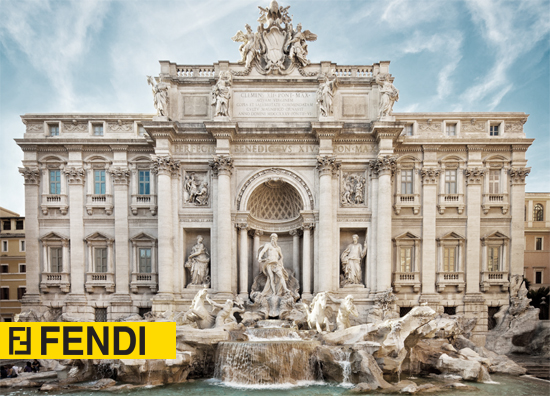 Quattro Fontane and the iconic Fontana di Trevi, or Trevi Fountain (built between 1732 and 1762). The US$2.9 million (€2.18 million), 20-month project will be completed in phases, as explained by Fendi designers Karl Lagerfeld and Silvia Venturini Fendi. These phases will include the re-waterproofing of the main basin, the cleaning of the façade and marble statues, and restoration of the gilded inscriptions. The Trevi Fountain will remain open to tourists throughout the restoration process (fear not tourists, fear not).
This announcement comes at a time when the funding for and preservation of cultural heritage sites in Italy is uncertain. Fendi, however, is not the first big-brand fashion name to take action in the preservation of Italy’s cultural heritage. Tod’s, an Italian company producing leather shoes and bags, is currently financing the restoration of the Coliseum for US$34 million (€25 million). Further north in Venice, Diesel, an Italian fashion company, is funding the restoration of the Rialto Bridge for US$6.7 million (€5 million).
Quattro Fontane and the iconic Fontana di Trevi, or Trevi Fountain (built between 1732 and 1762). The US$2.9 million (€2.18 million), 20-month project will be completed in phases, as explained by Fendi designers Karl Lagerfeld and Silvia Venturini Fendi. These phases will include the re-waterproofing of the main basin, the cleaning of the façade and marble statues, and restoration of the gilded inscriptions. The Trevi Fountain will remain open to tourists throughout the restoration process (fear not tourists, fear not).
This announcement comes at a time when the funding for and preservation of cultural heritage sites in Italy is uncertain. Fendi, however, is not the first big-brand fashion name to take action in the preservation of Italy’s cultural heritage. Tod’s, an Italian company producing leather shoes and bags, is currently financing the restoration of the Coliseum for US$34 million (€25 million). Further north in Venice, Diesel, an Italian fashion company, is funding the restoration of the Rialto Bridge for US$6.7 million (€5 million).
Of course, these generous donations do not go without recognition. For Tod’s, the funding agreement provides the company the rights to the Coliseum’s logo for 15 years, as well as branding Coliseum tickets with the company logo. Fendi’s sponsorship of Rome’s grandest fountain will be recognized by a small plaque to be placed near the fountain for four years.
The city council and Mayor Gianni Alemanno of Rome are hopeful these interventions will continue, as the preservation of the country’s past is in peril. Alemanno said, “Without similar initiatives, we won’t be able to save the cultural memory of our country.” Though council members are supportive of the private sector’s involvement in the preservation of Italy’s cultural heritage, some conservators are wary. They fear private-public partnerships will commercialize monuments of national pride, turning sites of inherent meaning and cultural significance into fashion advertisements.
The private-public partnership between Fendi and the Trevi Fountain is just one of many examples of a paradigm shift in the cultural sector regarding what Alemanno says is, “a new system of cultural patronage.”
What a Difference an “A” Makes: Moving from STEM to STEAM
It’s a hot-topic today, complete with nifty acronyms, but the great debate about the “Two Cultures” is hardly a new one. The movement to  incorporate “Art” in the STEM (Science, Technology, Engineering, and Mathematics) program curriculum recalls the historic debate between the Sciences and the Arts (for more information on the debate, read C.P Snow's short essay, "The Two Cultures”). The irony of their supposed polarity is the fact they are completely interrelated. To say that the field of Engineering involves and is influenced by nothing more than “scientific” fundamentals is to say a peanut butter and jelly sandwich is made with nothing more than peanut butter. And we all know that is just plain silly, and only half the sandwich.
incorporate “Art” in the STEM (Science, Technology, Engineering, and Mathematics) program curriculum recalls the historic debate between the Sciences and the Arts (for more information on the debate, read C.P Snow's short essay, "The Two Cultures”). The irony of their supposed polarity is the fact they are completely interrelated. To say that the field of Engineering involves and is influenced by nothing more than “scientific” fundamentals is to say a peanut butter and jelly sandwich is made with nothing more than peanut butter. And we all know that is just plain silly, and only half the sandwich.
“The arts can no longer be treated as frill. Arts education is essential to stimulating the creativity and innovation that will prove critical to young Americans competing in a global economy.”- U.S Secretary of Education, Arne Duncan
Ask an engineer (go ahead, I did) if they have ever turned to creative problem solving in their work, prototype building, model-making, or taken a course in design as part of their program’s curriculum. A course in design teaches an engineer the artistic and creative fundamentals they then apply to engineering-specific projects and solutions. Need a second opinion? Ask the Chief Financial Officer (CFO) at any company if they have ever pulled out a dry-ease marker and taken it to the white-board to diagram the effects of a potentially risky investment or visualize projections for the next quarter. Visual studies and applications are an integral component of STEM professions.
“The idea that we must choose between science and humanities is false”- Dr. Alan Brinkley, in the article “Half a Mind is a Terrible Thing to Waste,” Newsweek
So let's take a look at two different schools representing both “sides” of the "Two Cultures" debate. Perhaps you will agree with me that these two fields are not as mutually exclusive as some have explained them to be. In fact, it appears they are, dare I say, mutually interdependent.
One of the world's premier design schools, the Rhode Island School of Design (RISD), is leading the discussion with the initiative, STEM to STEAM. What follows is a description of RISD's position as published on the school's webpage:
“RISD offers endless examples of how art and design education teaches the flexible thinking, risk-taking and creative problem solving needed to solve today’s most complex and pressing challenges – from healthcare to urban revitalization to global warming.”
[embed]http://vimeo.com/48817744[/embed]
Ok. So now let’s head to one of the world's leading institutions for technology studies: Massachusetts Institute of Technology (MIT). MIT’s position on the STEM verses STEAM debate, as published online by the school, is as follows:
“In the current moment of economic uncertainty, America is once again turning to innovation as the silver bullet that will guide us forward. Yet in the eyes of many leaders, innovation seems tightly coupled with Science, Technology, Engineering, and Math–the STEM subjects. We need to add "Art" to turn STEM into STEAM.
Artists and designers make information more understandable, products more desirable, and new invention possible through the project-based inquiry that has long been practiced in the art studio. By investing in art/science collaborations in research and education we can keep America at the forefront of innovation, ensuring our sustained global leadership and cultural prosperity in the 21st century.”
At this point in my academic and professional career, I simply cannot fathom how true innovation can result without art and design. Design in and of itself has become a differentiating factor for American products in the global and increasingly competitive marketplace. Incorporating art and design in the STEM program will create a new generation of creative thinkers, doers and problem solvers, capable of innovating in an interdisciplinary context and world. Be it the Opening Ceremony at the Olympics, the iPhone, or the chemist restoring frescoes in Florence, Italy, art, design, science, technology, engineering, and mathematics are constantly at work together- equal weight must be given to art and design in school curricula across the country. Need I remind you that the world's greatest scientists, thinkers, and mathematicians were also poets, painters, and musicians. As Rebecca Ryan (founder of Next Generation Consulting) so brilliantly included in an October 2012 article, "Why STEM Isn't Working" in Madison Magazine, “Einstein’s theory of relativity, for example, came to him when he was participating in what he called “musical thinking.””
“Artists and scientists both ask big questions; designers and engineers both provide inspired solutions. Together they are more powerful than apart.” - RISD
I am most likely preaching to the choir, I am confident our TitA followers are already on board with the STEM to STEAM movement. I ask you to take your advocacy one step further by sending a letter to your Members in Congress or by contacting an elected official asking them to co-sponsor H.Res. 319: Expressing the sense of the House of Representatives that adding art and design into Federal programs that target the Science, Technology, Engineering, and Mathematics (STEM) fields encourages innovation and economic growth in the United States.
What the upcoming election mean for the arts
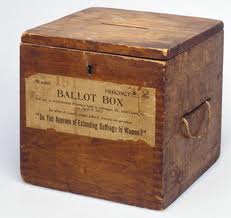 What will happen to arts, arts education, and arts agencies after the coming election? If you are registered to vote then you hold part of the answer in how you decide to cast your ballot. The coming election could very well decide whether or not there are numerous municipal, statewide, and national agencies that help support arts infrastructure and education.
Americans for the Arts collects information on elected candidates based on their voting record and stated policies. At the top of the ticket President Barrack Obama has gotten good marks from Americans for the Arts. He has proposed and supported increasing funding to the National Endowment for the Arts and the National Endowment for the Humanities and has come out against cuts to arts education funding and the Corporation for Public Broadcasting. Mitt Romney on the other hand has pledged to cut funding to the National Endowment for the Arts, the National Endowment for the Humanities, and the Corporation for Public Broadcasting.
What will happen to arts, arts education, and arts agencies after the coming election? If you are registered to vote then you hold part of the answer in how you decide to cast your ballot. The coming election could very well decide whether or not there are numerous municipal, statewide, and national agencies that help support arts infrastructure and education.
Americans for the Arts collects information on elected candidates based on their voting record and stated policies. At the top of the ticket President Barrack Obama has gotten good marks from Americans for the Arts. He has proposed and supported increasing funding to the National Endowment for the Arts and the National Endowment for the Humanities and has come out against cuts to arts education funding and the Corporation for Public Broadcasting. Mitt Romney on the other hand has pledged to cut funding to the National Endowment for the Arts, the National Endowment for the Humanities, and the Corporation for Public Broadcasting.
Support for the arts, arts funding, and arts education doesn't split strictly on party lines though and it is incumbent upon us as voters to understand where our national, statewide, municiple and local elected officials stand on support the arts, education, and the creative economy. Americans for the Arts has a handy tool that you can use to look up the positions of elected officials at all levels.
Are Bricks and Mortar the Best Use for Money in the Arts? The Overbuild of Cultural Facilities in the United States
Recently, the University of Chicago’s Cultural Policy Center released the report, “Set in Stone: Building America’s New Generation of Arts Facilities, 1994-2008.”
Summary: The research examines the boom of major cultural building projects (museum, performing arts centers, and theaters) between 1998 and 2004, specifically looking at the decade between 1990 and 2000. The findings indicate during that period, “the level of investment in bricks and mortar as a percentage of total revenue and assets was disproportionate.” The full report addresses the landscape of cultural building, the investment determinants of cultural building, the feasibility of cultural building projects, and the effects on communities. The report takes into account population change, the national trend in ratio of arts organizations to cultural facilities, the relationship between the number of existing facilities in an MSA and the population, GDP, economic climate, municipal spending on physical infrastructure, spending by type of project, education rates, median household income levels, distribution of costs of projects (by region), geographic considerations, and other factors affecting the supply, demand and sustainability of cultural building projects.
[embed]http://youtu.be/KwhG7SK9csc[/embed]
Case Studies: Four case studies, presented as teaching resources, portray complex, management situations students and professionals might encounter in the real world. The cases (comprised using internal documents , construction data, and first-hand accounts from administrators, board members and/or volunteers involved in each situation) emphasize the need for managers to make strategic decisions, weighing the benefits and risks of each potential course of action. These studies provide a platform for discussion about the strategic design of projects, potentially shaping future design and management practice.
The four case studies highlight issues of strategic decision making, project design, expansion and management at:
1) the Art Institute of Chicago in Chicago, IL
2) the AT&T Performing Arts Center in Dallas, TX
3) the Long Center for the Performing Arts in Austin, TX
4) the Taubman Museum of Art in Roanoke, VA
Key Findings: The report and the findings show that (taken from the report)
- Cultural institutions and arts facilities were overbuilt during the boom years
- Performing Arts Centers were the dominant form of new facilities
- The building boom affected the entire country, but was concentrated in the South, which saw enormous increases in the total number of facilities
- Building in the arts grew faster between 1998 and 2001 than or on par with building in other sectors, particularly health and education
- Rising population and higher average levels of education and income help explain why some cities built more than others
- There is no clear pattern of spillover effects (negative or positive) of specific cultural building projects on non-building local cultural organizations and the greater community
- There was far less investment in traditional theater facilities than there was in museum and performing arts centers
- The New York-Northern New Jersey-Long Island MSA spent more on cultural infrastructure ($1.6 billion) building than any other MSA during this period
- Research shows that for every additional cultural facility a city had, it invested between $0.11 and $0.23 more per capita per year in cultural building projects
- What influenced how much a city invested in cultural infrastructure was not the size of a city’s population, but how fast the population was increasing or decreasing
[embed]http://youtu.be/76vN7mb9n6E[/embed]
Looking Ahead: Joana Woronkowicz, co-author of the report, summarizes the lessons learned from the study and how the arts industry should proceed in making building project decisions.
• What is the motivation for the project?
• Does it align with organization’s artistic mission?
• Is there a need for the project (not a want), but a need?
• Do I have the leadership in place to take the project from the beginning to the end?
• Does the building project respond to the needs of the community?
• How can I be flexible in controlling expenses and nimble in generating income?
Turning Around Education with the Turnaround Arts Initiative
By now, you have probably read about President Obama’s Turnaround Arts Initiative in the paper, seen a segment about it on the nightly news, or 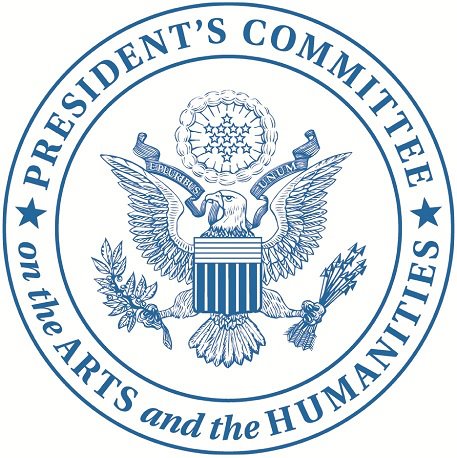 heard about it on Entertainment Tonight between cosmetic secrets of the stars at the Metropolitan Gala and celeb sightings of Blake Lively with Ryan Reynolds (Wedding plans in the works? You didn't hear it from me...).
If you are still curious about the Turnaround Arts Initiative, then this post will provide you with a tidy summary of the program from a policy and arts education perspective. Unfortunately though, this post does not include details on Eva Longoria’s summer workout plan and how-to advice on beating the heat in Mila Kunis-esque summer dresses. Sorry.
heard about it on Entertainment Tonight between cosmetic secrets of the stars at the Metropolitan Gala and celeb sightings of Blake Lively with Ryan Reynolds (Wedding plans in the works? You didn't hear it from me...).
If you are still curious about the Turnaround Arts Initiative, then this post will provide you with a tidy summary of the program from a policy and arts education perspective. Unfortunately though, this post does not include details on Eva Longoria’s summer workout plan and how-to advice on beating the heat in Mila Kunis-esque summer dresses. Sorry.
“We are, as a country, engaged in a national conversation about how to fix our nation’s broken schools. We feel strongly that, while no one strategy alone is a silver bullet, art education should have a seat at the table. Turnaround Arts will test that theory, in addition to bringing effective arts education to thousands of our neediest young people and creating more access to the arts in our most underserved neighborhoods.”
The Turnaround Arts Initiative is:
• an arts education funding initiative in full swing as of April 23, 2012
• a public-private partnership designed to help narrow the achievement gap and increase student engagement through the arts (private partners include: the Ford Foundation, the Herb Alpert Foundation, Crayola, the NAMM Foundation, the Aspen Institute and Booz Allen Hamilton)
• a creation of the President’s Committee on the Arts and Humanities (PCAH), in coordination with the U.S. Department of Education and the White House Domestic Policy Council (other public partners include the National Endowment for the Arts, the Arts Education Partnership, the Council of Chief State School Officers, and the National Assembly of State Arts Agencies)
• testing the hypothesis put forward by the PCAH’s 2011 report Reinvesting in Arts Education: Winning America’s Future Through Creative Schools, that “high-quality and integrated arts education can be an effective tool to strengthen school reform efforts-boosting academic achievement and increasing student motivation in schools facing some of the toughest educational challenges in the country”
• directed at the nation’s lowest-performing elementary and middle schools across the country, known as “turnaround schools” (turnaround schools are in the lowest-performing 5 percent of their state and receive School Improvement Grants through the Department of Education)
• a pilot project at this point, schools have already been selected to participate
• a two-year project, results will be evaluated at that point, program expansion will be considered, and resources will be made available from which ALL schools can benefit
What will the Turnaround Arts Initiative do and how will it be evaluated?
• Provide the selected schools with arts education services, resources and materials to “increase the likelihood of successful school turnaround, engage their community, and raise the visibility of their achievements”
• The key to the program's success is fully integrating the resources into the curriculum, making effective, impactful and rigorous arts programming part of the school’s being
• The impact and effectiveness of arts education in advancing academic achievement, student and community engagement, and overall school performance will be evaluated and reported by Booz Allen Hamilton, a consulting firm, at the close of the two-year term
Why did Entertainment Tonight cover the Turnaround Arts Initiative? Eight under performing schools across the country were selected through an application process. These schools have each been “adopted” by celebrity artists who will remain involved in the school’s curriculum reform by participating in events, performances, and classes. Below is the breakdown of each parent artist and their adopted school(s):
• Chuck Close (award-winning visual artist), Roosevelt Elementary in Bridgeport, Connecticut
• Yo-Yo Ma (award-winning cellist), Orchard Gardens School in Boston, Massachusetts
• Sarah Jessica Parker (award-winning actress), Martin Luther King, Jr. School in Portland, Oregon
• Kerry Washington (award-winning actress), Savoy Elementary in Washington, DC
• Forest Whitaker (award-winning actor), Findley Elementary School in Des Moines, Iowa
• Damien Woetzel (arts leader, previous Principle Dancer with New York City Ballet), Lame Deer Jr. High School in Lame Deer, Montana and Orchard Gardens Schools in Boston, Massachusetts
• Alfre Woodard (award-winning actress), Batiste Cultural Arts Academy in New Orleans, Louisiana and Noel Community Arts School in Denver, Colorado
Is there opposition?
• Diane Ravitch, author and previous U.S. Assistant Secretary of Education under George H. W. Bush and Bill Clinton, says the Turnaround Arts Initiative is just a “teeny, tiny little band-aid on what is a giant, national, festering problem…And it doesn’t begin to address the needs of the schools.”
But we have to start somewhere, right? Many school systems and communities are eager to be included in the program as it offers promising opportunities and resources customized to fit the needs of each school. However, as a pilot project with strict parameters, the Turnaround Arts Initiative is currently focused on evaluating the impact and results of the program on the eight selected schools over the next two years. Meanwhile, schools and the general public can stay informed about the project, its progress, and resources made available by referring to the Turnaround Arts Initiative website, its Twitter feed, and the Arts Education Partnership’s webpage.
Stay informed about the Initiative, stay inspired by its intentions, and keep advocating for arts education funding on a local level.
A Recap of the Year We Spent Together
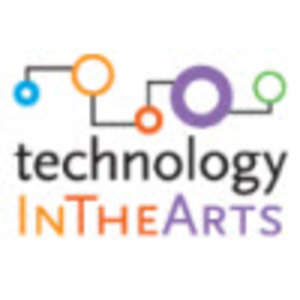 First, some sad news to share with everyone: this is my last post for Tech in the Arts, the quintessential blog looking at the intersection of arts and technology online. As a student here at Heinz College, it has been an honor to share with you on a weekly basis a look at different trends and topics at that very intersection, with a little bit of policy thrown in.
For my final post, I wanted to take a look back at some of my favorite posts from the past year, and share with everyone what my thought process was when it came to writing about the important issues that affect the arts community on a daily basis.
First, some sad news to share with everyone: this is my last post for Tech in the Arts, the quintessential blog looking at the intersection of arts and technology online. As a student here at Heinz College, it has been an honor to share with you on a weekly basis a look at different trends and topics at that very intersection, with a little bit of policy thrown in.
For my final post, I wanted to take a look back at some of my favorite posts from the past year, and share with everyone what my thought process was when it came to writing about the important issues that affect the arts community on a daily basis.
Compared to the other writers here at Tech in the Arts, I have always tried to take a different approach – one that is centered on public policy, and how it impacts the arts community and arts lovers everywhere. As a Master’s student in public policy here at Carnegie Mellon, this is what I study on a daily basis and what I am passionate about, and I have been determined to include it in the overall conversation.
One of the topics I have written about frequently is the issue of funding for the arts, and the somewhat uncertain future it faces. Many cities and states, and even the federal government, are facing times of budget austerity, and cuts to the arts are happening at an alarming pace. I also wrote about the National Endowment for the Arts and its funding history, along with the new upstart on the arts funding block, Kickstarter. Arts financing in Europe has also been the target of deep cuts, and I finally looked at the debate surrounding what method of funding was the best for the arts in America. And in my very first post, I talked about how important it was (and still is!) to protect federal funding for the arts.
One of my favorite topics to write about was where arts and public policy intersected. One of my favorites to write was looking at where public policy lived through the eyes of the artists; another was a look at artistic revisions of the American Dream of buying a home. As we all know, the arts play a large role in economic development, which I wrote about, and I also took a look at how cities are thinking differently when it comes to development, often using the arts to differentiate them. Finally, I took a look at how cities are beautifying themselves through public works of art, as they face budget shortfalls and have to think creatively.
The most popular piece I wrote this year (and perhaps the most controversial, given some of the feedback and comments!) was looking at the debate over the most artistic city in America. The winner (as crowned by the Atlantic) was Santa Fe, but certainly cities everywhere can make their own legitimate cases for being the most artistic. Its topics like that are so much fun to write about; everyone has an opinion, wants to make their case for their own city, and it encourages discussion and debate.
I also enjoyed writing about an issue that doesn’t receive a lot of attention in the arts community, but is very important nonetheless, which is the issue of net neutrality. I wrote about how important the issue is, and also about how the issue is not going away anytime soon.
Finally, two of my favorite posts were about topics that don’t fit neatly within any of the above categories: My look at the Google Art Project and the White House, and also my look at the fall of Kodak and its effect on artistic inspiration.
It’s been a pleasure being a part of the fantastic and talented team here at Tech in the Arts for the past year. Thanks go out to everyone on the team for their help and support, and chiefly for the opportunity to write for all of you on a weekly basis. Thank you to everyone for reading, for being so supportive and for the kind comments and responses throughout the year.
For those so inclined, you can follow me on Twitter at @seanbowie, and can reach me by e-mail at seanmbowie@gmail.com. It’s been a pleasure everyone, thank you!
Up for Debate: What is the Best Way to Fund the Arts in America?
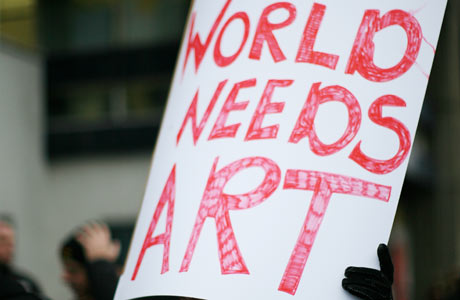 It is a topic that we have covered extensively here at Tech in the Arts over the past couple of months: what is the best way to fund the arts in America?
With the National Endowment for the Arts seeing budget cuts, Kickstarter growing in popularity, and increased austerity measures around the world forcing large cuts to the arts, the topic has received a fair amount of attention in recent months. Last week, the New York Times, as part of its perennial “Room for Debate” series, asked the question I mentioned above, along with some others: What can we do to stabilize funding? Can we learn from the experiences of other countries? What can be done to improve effectiveness?
It is a topic that we have covered extensively here at Tech in the Arts over the past couple of months: what is the best way to fund the arts in America?
With the National Endowment for the Arts seeing budget cuts, Kickstarter growing in popularity, and increased austerity measures around the world forcing large cuts to the arts, the topic has received a fair amount of attention in recent months. Last week, the New York Times, as part of its perennial “Room for Debate” series, asked the question I mentioned above, along with some others: What can we do to stabilize funding? Can we learn from the experiences of other countries? What can be done to improve effectiveness?
The Times gathered eight individuals from the artistic, non-profit, and political sectors, asking them what they believed were the best ways to fund the arts. Their answers might surprise you.
The eight respondents in the series tended to gravitate towards two positions: either the government needs to do more to fund the arts and various programs, or the government needs to get out of the way and the responsibility should rest on individuals instead. Like most policy debates, the question naturally comes back to what role the government should play; while some would argue too little is spent on funding (for example, the NEA received $147 million last year, a tiny, tiny fraction of the overall federal budget), others would say that instead of the government using taxpayer dollars to fund programs, it’s better left to the private sector and individuals to decide what programs should be funded.
Going through the eight responses, it was interesting to see how each person eventually gravitated towards one of these two areas. Some were more explicit and forward than others, but it’s this tug of war between more government investment and less government involvement that always seems to come up when debating any kind of public policy. The arts are no exception.
I encourage everyone to read the entire discussion, but I will summarize the eight viewpoints below.
Beth Nathanson, director of development at Playwrights Horizon, is quick to point out America’s “culture of philanthropy,” and says the following:
“It is a misconception that corporate or government support has ever provided the majority of arts funding. Each United States citizen pays about the cost of one postage stamp in taxes to support national arts and arts education programs. And those corporations that fund the arts primarily fund prominent organizations serving a high number of people. The real stars of arts giving are individual donors. They provide the lion’s share of support across the country, and on average, give more to arts than corporations and government entities combined.”
Nathanson points out that the arts are a fundamental part of our daily lives, and encourages individual investment in the arts, instead of government involvement. She, and many others, point to the Brazil model, which is a sort of public-private partnership that raises funding for the arts through payroll taxes. Everyone can certainly agree that “the arts should be an integral part of our lives,” the question becomes, in the end, how is that managed and developed? While taxes are certainly one way, personal responsibility, through giving, is another possibility as well.
David Boaz, of the Cato Institute, a libertarian think tank based in Washington, takes the individual model a bit further, and says that all arts funding needs to be separated from the government, because the government has too much control over where the money is spent. Better to let individuals and the private sector handle the responsibility instead, Boaz writes:
“People should not be forced to contribute money to artistic endeavors that they may not approve, nor should artists be forced to trim their sails to meet government standards.”
Boaz goes on to mention Kickstarter, an outlet for individuals to direct money to programs they explicitly support. This approach, Boaz argues, is preferable to the NEA’s approach, which is to take money from all taxpayers and then direct it to programs the agency support.
Robert Lynch, CEO of Americans for the Arts, disagrees. Instead of spending less on the arts at the federal level, we should be spending more, and seek to start a “national dialogue” on the importance of arts funding. Lynch writes:
“Last month, 800 advocates were in Washington to defend to Congress the 47 cents per person that America spends on the National Endowment for the Arts. This amount should be much more but despite its seemingly small percentage, government support leverages billions in matching dollars, increases access — especially for the underserved — and encourages new voices, ideas and expressive endeavors that have kept the U.S. at the vanguard of creativity and innovation.”
Lynch writes about America needing to have the “creative will” to move past the issue of why funding is so important and start talking about how we should do it. Lynch, and many others, believe government revenue is the best way to do that.
Sergio Munoz Sarmiento, an artist and arts lawyer, takes issue with “mandatory funding,” the idea that everyone contribute to the same pot and those funds have to be spent each year:
“Arts funding should be encouraged, yet voluntary. Mandating government and corporate subsidies for the arts raises a few concerns for me. Will mandated art subsidies affect the quality of artistic production? Will this type of funding encourage a passive artistic community? And finally, will it create a curatorial practice on behalf of granting institutions?”
In other words, a program where funding is guaranteed does a disservice to artists, who will not be as entrepreneurial or imaginative if funding is a certainty. Better to have more competition and uncertainty, which will lead artists to become more daring, creative, and/or original in their works.
Clyde Valentin and Kamilah Forbes, of the Hip-Hop Theater Festival, focus on the reliability of arts funding, and maintain that a stronger commitment to the arts will encourage more collaboration and certainty among artists and arts groups:
“The experience of the Hip-Hop Theater Festival is that where our funding is most reliable, our programs have the most impact. In Washington, for example, our partnership with the D.C. Commission on the Arts and Humanities has enabled our organization to produce the D.C. Festival for little or no direct cost to the public. The festival draws an unprecedented audience annually to some of D.C.’s most prestigious arts institutions, reaching thousands who get to experience art they would never otherwise have an opportunity to see.”
Michael Royce, executive director of the New York Foundation for the Arts, is another defender of federal funding for the arts. In addition to greater federal funding, he encourages greater incentives, through federal tax policy, for individuals to donate to the arts as well:
“The U.S. model has traditionally given incentives for private support, usually through tax deductible donations. Likely the most efficient method of increasing private funds is to strengthen those incentives. For example, the current cap on tax-deductible contributions is 10 percent of taxable income and could be raised for arts contributions, perhaps to 15 percent. Smaller companies, through cash grants or in-kind donations, can make vital and targeted contributions to specific artists' projects. On the individual level, tax forms could allow for earmarked donations to the arts.”
Royce, and many others, agree that the problem is that there simply isn’t enough funding for the arts at this time. Through greater federal investment, and tax incentives, Royce argues for a new model.
Finally, Stacy Palmer, editor of the Chronicle of Philanthropy, talks about how little of the money donated to charitable causes in 2010 went to the arts community: only five percent. The majority of the money went to places like universities, religious groups, and hospitals. She also points out the myth that most arts funding is donated by the wealthy:
“It's a myth that the rich are keeping the arts alive; while many are to be commended for their huge donations, America's millionaires and billionaires provide a small portion of the money that flows to cultural causes.”
Palmer points out that it is time to “rethink” how everyone, including the public and private sectors, individuals, and arts organizations steer money towards the arts, which is something I think all of us can agree on.
Taken together, the New York Times series was a fascinating look at the different perspectives towards how arts should be funded in the U.S. All of us can agree on the problem: the arts need more funding. The question, going forward, is how to best do so.
Whether it is continued federal support towards groups like the National Endowment for the Arts, more of a focus on private alternatives, like Kickstarter, or some kind of combination of the two, the debate is sure to continue.
After reading the different responses, where do you stand? How should funding for the arts be developed in the United States, and what steps can we take to get there?
Beautifying the City through Public Works of Art
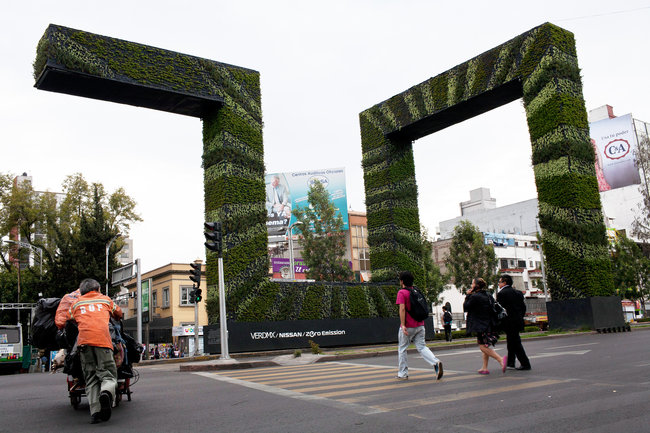 There may be no better way to beautify a city (or most cost effective way, in many aspects) than by using public works of art.
As I have written about before, cities, especially cities that are losing population and/or facing severe budget shortfalls, are turning more and more to public art to revitalize areas and encourage more tourism. And as I wrote about last week, cities are turning more and more to what makes them unique, a significant change in focus from the tried and true method of trying to outdo or outclass your neighbors. Gone are the days (I hope, at least) of cities competing for visitors by building bigger stadiums or concert halls in an attempt to prove that they are, in fact, the most exciting city this world has ever seen.
There may be no better way to beautify a city (or most cost effective way, in many aspects) than by using public works of art.
As I have written about before, cities, especially cities that are losing population and/or facing severe budget shortfalls, are turning more and more to public art to revitalize areas and encourage more tourism. And as I wrote about last week, cities are turning more and more to what makes them unique, a significant change in focus from the tried and true method of trying to outdo or outclass your neighbors. Gone are the days (I hope, at least) of cities competing for visitors by building bigger stadiums or concert halls in an attempt to prove that they are, in fact, the most exciting city this world has ever seen.
In light of all this talk about urban renewal, green spaces, and new works of public art, what are some of the latest and greatest pieces of work on display? A number of outlets, including the New York Times, the Atlantic and others, have recently taken a look at works from across the world, and I have assembled them here for your viewing pleasure!
The New York Times recently took a look at a new project in Mexico City that seeks to provide both aesthetic pleasure and help the environment: a set of three “eco-sculptures” that comprise a sort of urban garden in the city. As you can see in the image above, these arches, comprised of thousands of plants each, are an attempt to beautify the city and help ease pollution in the large metropolis. Installed by a local non-profit, the sculptures are part of an overall effort to help green a city that is not particularly known for having a sustainable reputation; as the New York Times reports, these three sculptures are just a small part of a broader garden movement, and the attention these works of art have received are bound to make the effort that much more noticeable.
Over in Los Angeles, a new public art project has taken a little of bit of nature and transported it, visually at least, to an urban area. Artist Paige Smith has crafted little miniature geodes, crystals that form inside of some rocks, and installed them in unassuming places around the city: inside pipes, brick walls, or even the cracks of a wall. Smith has created little 3D sculptures made of paper to have the appearance of geodes, and the result is a unique little diversion from the normal city wall. She’s up to a dozen installations across the city, and you can see a full map of locations on her website.
(Photo courtesy of Paige Smith)
In St. Louis, public art is being used to help solve a problem: how do theatres make their patrons more efficient? In other words, is there a way to encourage patrons to stay longer and keep themselves busy, instead of just standing around waiting for the show to start?
A piece is going up in the Grand Center neighborhood of St. Louis that is designed to encourage patrons and visitors to stay a while. Titled “A Chromatic Confluence,” it will be a mazelike sculpture made up of about 20,000 feet of different colors of string. The overall structure will be fairly large in size, about 25-feet by 65-feet, and will be lit up at night, as you can see below. Hoping to draw in patrons and foot traffic, it is an attempt to grab people’s attention and give them something to do before the show starts. The piece is the first of a planned series of public art projects in the St. Louis area, in an overall attempt to bring more culture and artistic pieces to the city.
(Photo courtesy of the St. Louis Post-Dispatch)
Overseas, the city of Manila is moving ahead with public art, but is doing so in an attempt to be as environmentally sustainable as possible. Manila has the distinction of being one of the world’s most polluted cities, and attempts have been made in recent years to help cut down on emissions and improve air quality.
Courtesy of the Atlantic, a local Philippine company has created a paint which it claims can help purify the air while being used, and since the discovery, murals have been painted all over the city in attempt to not only beautify areas of the city that been victims of neglect and destruction, but also help the environment as well. The BBC recently filed a report about the paint and the attempt to improve the city through public art.
(Photo courtesy of The Atlantic)
These are just a few of the examples of cities using public art to help improve the aesthetic quality of their cities. Many more projects are underway, popping up in cities all across the United States and the world. What are some of your favorite public works of art in your cities, or perhaps favorites you’ve seen in others? Feel free to comment below!
(Top photo courtesy of the New York Times)
Lessons from the Bronx
By now you may be aware of the Bronx Museum of the Arts' new ticketing initiative. If not, take a look at the Museum's Facebook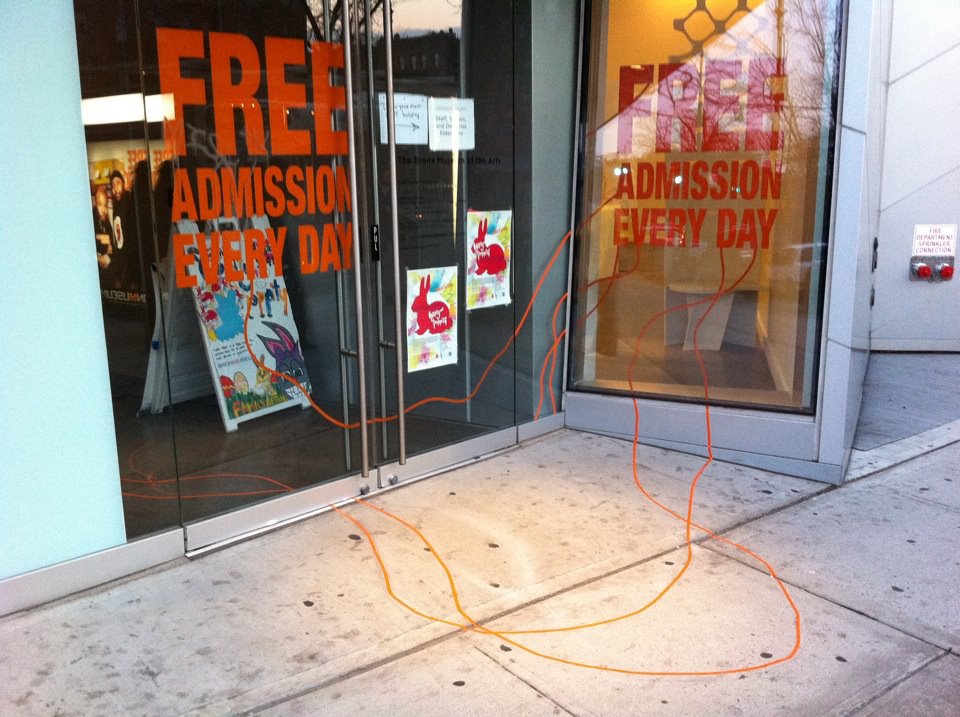 status from March 30th: "Starting today, the Bronx Museum of the Arts will be Free to all. Thursday through Sunday, FREE! First Fridays! FREE. Whether you're 8 or 88, FREE! Getting Here: B/D train to 167th St (Unlike the Museum, the train fare is not free)."
In celebration of its 40th anniversary, the Museum announced just last month it would offer free admission to guests-- this coming at a time when student discounts, twofer deals, good coupons, and gas below $3.99/gallon are at a premium. According to Museum Director, Holly Block,
status from March 30th: "Starting today, the Bronx Museum of the Arts will be Free to all. Thursday through Sunday, FREE! First Fridays! FREE. Whether you're 8 or 88, FREE! Getting Here: B/D train to 167th St (Unlike the Museum, the train fare is not free)."
In celebration of its 40th anniversary, the Museum announced just last month it would offer free admission to guests-- this coming at a time when student discounts, twofer deals, good coupons, and gas below $3.99/gallon are at a premium. According to Museum Director, Holly Block,
With our immediate community being the poorest per capita in the nation, and at a time when many are struggling to pay bills…we don't want anyone to have to use (admission costs) as excuse not to visit us.
It is because of a grant from the New York Community Trust that the museum is able to offer free admission to the public- though the grant only covers admission costs up to 15 months. The Museum is hoping to secure a more permanent funding source to be able to continue to provide free admission to the public after those 15 months.
Not only does this reduce barriers of entry for Bronx residents, New Yorkers, tourists, and artists, but it also benefits the museum community at large. Many museums have implemented similar free admission pilot programs and have reported varying results. It will be interesting to follow up with the Bronx Museum at the conclusion of the 15 month, free admission period to review its attendance numbers and demographics during that time.
While snooping around for more information on the Museum’s new pilot program, I stumbled upon two special offerings at the Museum. How did I NOT know about these programs?!
1) smARTpo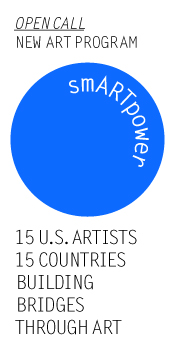 wer: In conjunction with the U.S. Department of State’s Bureau of Education and Cultural Affairs, the Bronx Museum administers this cultural diplomacy program. The program funds and provides travel opportunities for 15 U.S. artists to create and work abroad on a community-based art project. smARTpower supports “the development and implementation of community-based art projects that engage youth and other local residents, including artists. The projects are strongly encouraged to create a tangible legacy of the work accomplished through smARTpower in a variety of visual arts media…” The program is open to professional artists only with U.S. citizenship.
wer: In conjunction with the U.S. Department of State’s Bureau of Education and Cultural Affairs, the Bronx Museum administers this cultural diplomacy program. The program funds and provides travel opportunities for 15 U.S. artists to create and work abroad on a community-based art project. smARTpower supports “the development and implementation of community-based art projects that engage youth and other local residents, including artists. The projects are strongly encouraged to create a tangible legacy of the work accomplished through smARTpower in a variety of visual arts media…” The program is open to professional artists only with U.S. citizenship.
2) Artist in the Marketplace (AIM): Established in 1980, the program seeks to provide “networking opportunities for emerging artists residing in the New York metropolitan area" and to introduce "their work to a greater audience.” Thirty-six selected participants attend weekly seminars led by a faculty of specialists. Topics covered in these sessions “address areas of practical concern to artists including: career management and gallery representation; exhibition and public art opportunities; grant writing, copyright law, and marketing.”
It is a hopeful sign, especially in these financially trying times, when a non-profit arts organization remains so concerned with serving its constituents- accessibility for its local audience, professional advancement for its arts community, and greater cultural understanding in diplomacy efforts.
Cities Thinking Differently, Through the Arts
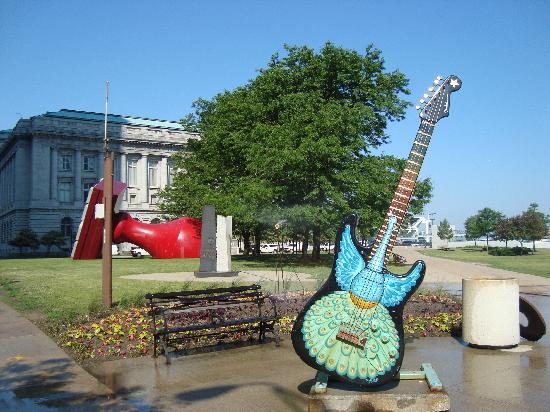 The past couple of years have been rough on America’s cities. The recession, job losses, budget cuts, and more people moving to the suburbs have all resulted in less tax revenue and a sense of unease about their future. Through these struggles, the cities have to consider questions like: What steps can be taken to foster economic growth? How can we become a player in an increasingly competitive global marketplace?
The cities of the Rust Belt, however, have had it a little worse. Unlike booming cities like Phoenix or Houston, cities like Detroit, Cleveland, and Pittsburgh are losing residents, with a fear that population losses will continue unless something drastic is done to “save the city.”
The past couple of years have been rough on America’s cities. The recession, job losses, budget cuts, and more people moving to the suburbs have all resulted in less tax revenue and a sense of unease about their future. Through these struggles, the cities have to consider questions like: What steps can be taken to foster economic growth? How can we become a player in an increasingly competitive global marketplace?
The cities of the Rust Belt, however, have had it a little worse. Unlike booming cities like Phoenix or Houston, cities like Detroit, Cleveland, and Pittsburgh are losing residents, with a fear that population losses will continue unless something drastic is done to “save the city.”
But instead of looking to traditional approaches like building an expensive sports stadium, performing arts complex or shopping malls, residents in cities like Cleveland and Detroit are taking a different route: embracing what Grist calls “Rust Belt chic,” the gritty, industrial, working class roots that embody and define the cities. One of the ways these cities are embracing this new dynamic is through the arts, and proving that having a thriving arts city doesn’t require investments or new arts venues: sometimes, all you need is to do is tap into what makes your city unique.
Much has been made about the struggles that face cities like Cleveland, Detroit, and Pittsburgh. This “Rust Belt chic,” first dreamed up by the “I Will Shout Youngstown” blog, based out of Youngstown, Ohio, can be best described by Governing magazine:
“A certain fascination with places that have fallen on hard times like the Rust Belt…has taken hold. Part of it is the scruffy, industrial look. It may also be a rejection of cities with gleaming condo towers, bistros and boutiques that were once so trendy yet now seem so frothy and fake.”
In other words, instead of trying to compete with the New York’s and LA’s of the world for visitors and potential residents, think different.
Cities all across the Rust Belt are taking this approach. But what many cities are doing is taking a low cost and high reward strategy towards economic development, which includes the arts community in a big way.
One example, as I wrote about in a recent post, is Detroit, who is embracing the arts community by providing tools and equipment to up-and-coming artists, fostering a sense of community for new artists moving into the city, even as thousands of residents leave every year. Detroit has the furthest to go of any city on this list, but businesses have started to move back to the city, young people are starting to move downtown, and its art scene has become home to increasingly diverse and eclectic artists, seeking to make a name for themselves.
Our home town of Pittsburgh is thriving (as any of us Pittsburgh residents would certainly tell you), and part of that is due to a thriving arts scene, which is frequently cited as one of the best things Pittsburgh has to offer. Much of the decay and abandoned buildings caused by the steel industry leaving decades ago has been taken over by the arts community and transformed into art spaces. What used to be an abandoned warehouse is now an art gallery; what used to be a factory plant is now a mixed use performance space.
It is because of this determination and grittiness, the drive to think differently and transform existing spaces, which makes Pittsburgh a perennial power in “America’s most livable cities” lists, often taking the top overall spot, as it did in 2010.
Cleveland is another case study. City leaders have struggled to come up with catchy slogans in an attempt to draw visitors, but local artists and arts venues aren’t focused on what Cleveland can do to “catch up” with other cities; they’re embracing what makes them different.
The Next American City recently looked at what it calls the “creative allure of urban grit,” focusing on cities like Cleveland. Because in cities like Cleveland and other across the Rust Belt, “you’re forced to accept that shit happens, and with that comes a freedom to creatively make sense of what’s happening. That’s art in a nutshell: the burn to make meaning out of failed plans and ruin.”
Some local artists are doing just that. The Next American City looked at Cleveland artist Amy Casey, whose paintings offer a unique and real look at the city. Housing vacancy and abandoned industrial plants a huge problem in Cleveland; Casey draws paintings where houses are connected together by ropes, or industrial areas are marked by decay.
One cannot help but to notice the economic strife and abandonment that has taken part in these cities; but while some would find such a sight depressing, others see inspiration. Casey’s paintings, and many others throughout Cleveland, seek to symbolize both the struggles it faces going forward, and the opportunity that awaits them.
Cities like Detroit, Pittsburgh and Cleveland all have many problems, and no one is here to suggest that the arts can save them on their own. But while all three areas, and dozens of others, create economic development plans and seek to spur investment and population growth to cities long forgotten by their neighbors, the arts is a way to provide a short-term boost to lift spirits, provide inspiration, and instill a sense of pride to communities.
We know it will be a tough and long road back for these cities. But at the same time, embracing what many call “rust belt chic” is a way for these cities to focus on what makes them different and unique, and offer a taste of what people can expect from these faded, but not yet broken, great American cities.
The 2012 London Olympic Games and the Role of the Arts
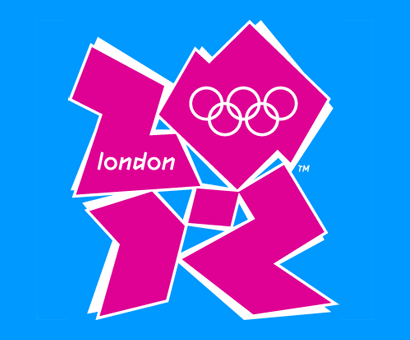 You may have heard: the 2012 Summer Olympics, the global 2-week spectacle that brings some of the best athletes from around the world to compete in over two dozen sporting events, is taking place later this summer in London, from July 27th through August 12th.
But what you may not have heard about are all the exciting and unique events that are intended to showcase the cultural and artistic diversity of London, expressed through art, through a series of exhibits, performances, galleries and shows. The hope, organizers say, is to leave a “lasting legacy for the arts in the UK,” and with millions of tourists visiting the city for the festivities, and billions watching around the globe, there may be no better opportunity for that kind of exposure.
You may have heard: the 2012 Summer Olympics, the global 2-week spectacle that brings some of the best athletes from around the world to compete in over two dozen sporting events, is taking place later this summer in London, from July 27th through August 12th.
But what you may not have heard about are all the exciting and unique events that are intended to showcase the cultural and artistic diversity of London, expressed through art, through a series of exhibits, performances, galleries and shows. The hope, organizers say, is to leave a “lasting legacy for the arts in the UK,” and with millions of tourists visiting the city for the festivities, and billions watching around the globe, there may be no better opportunity for that kind of exposure.
So while the games may receive the lion’s share of attention this summer, it is the British arts community that is hoping to have a more sustainable impact for years to come.
London’s art renaissance is comprised of two parts: the first, the London 2012 Festival, is taking place this year from June 21st through September 9th, and is largely centered on the Summer Olympics and the Paralympics that follows. It is part of a broader campaign, called the Cultural Olympiad, which is a multi-year effort that started in 2008 and is dedicated to showing visitors the best Britain has to offer in the worlds of art, dance, music, culture and more.
The London 2012 Festival is the more high profile project, and will be immediately noticeable to anyone who makes the trip to London for the games, as over 1,000 events are planned. Organizers are proclaiming that there are “10 million free opportunities to get involved,” and while the full list of events has yet to be revealed, there are already hundreds of shows and exhibits that have been announced. Perusing the website you can find such events as film festivals, comedy shows, concerts, carnivals, and fashion shows, some of which require tickets, but the majority of the events are free to the public.
One of the most notable events announced thus far is the Damien Hirst exhibition at the world-famous Tate Modern. In the world of film, a festival showing silent movies by home town director Alfred Hitchcock will be presented, alongside a live musical performance of the material.
My favorite part of the festival, however, and I imagine many others feel the same way, is the quintessential British playwright who will receive top billing. William Shakespeare will be in the spotlight, as the World Shakespeare Festival, which begins next Monday (April 23rd) and runs through September, will present almost 70 productions of Shakespeare’s plays in thirty different locations across the United Kingdom, including Scotland and Wales.
Organized by the Royal Shakespeare Company, organizers are calling it the “biggest celebration of Shakespeare ever staged,” with thousands of actors from around the world taking part in the project. In addition to the usual theatre presentations of Shakespeare’s work, there will be street performances and even amateur performances as well. The most ambitious part of the festival is the Globe to Globe project, where performers will act out all of Shakespeare’s plays, but each of them will be performed in a different language with different actors used for each performance.
It is important to remember that London is not only a sporting destination or the home to great museums and theatres: it is also what the Atlantic calls a “global cultural hub,” home to so many uniquely cultural people and neighborhoods. This cultural diversity will be on display through the festival as well, showcasing some of the best art from countries around the world.
One of the criticisms of the Cultural Olympiad and the upcoming London 2012 festival is the costs associated with such lavish productions, and estimates thus far for the total cost of both programs is about $154 million, no small amount for a country dealing with harsh austerity measures across the board over the last couple of years.
In addition to the overall government-wide austerity measures put in place by the British government, the games also come at a time of dwindling funds for the arts in not only just the UK, but all across Europe. I wrote recently about the impact that arts communities in Europe are facing, and while countries like Italy and the Netherlands have received the most attention, the cuts have hit the UK as well: as the New York Times reports, the British Arts Council saw its government funding recently reduced by 20 percent.
When the 2012 games were awarded to London, back in 2005, the economy was booming and expectations for both the games and the Cultural Olympiad were sky high, and lavish funding was promised. Of course, after the global economic recession hit in the fall of 2008, expectations were tempered, and both sides have adjusted accordingly.
One of the criticisms that critics have about the Summer Olympics is that it’s a sporting event that costs billions of dollars to produce, creates years of traffic problems and construction delays, and all the pageantry and spectacle that it comes with only lasts for two weeks, and then it’s gone forever (well, except for all the unused stadiums that come with it).
While the sporting part of the Olympics is only in town for those two weeks, it is the hope of organizers of both the London 2012 festival and the Cultural Olympiad that the impact that the arts community brings to the festivities, through art, dance, music, film, culture and so much more, has a lasting impact even after the games have ended and all the medals have been handed out. It may not be in place as long as a giant football stadium, but the impact on British culture is sure to last for quite some time.
Musicians Standing Up for Net Neutrality
[Casey Rae-Hunter is the communications director for Future of Music Coalition - a national, nonprofit education, research and advocacy organization for musicians. He has generously given us permission to republish this article which originally appeared on the Future of Music Coalition website .]
 In the almost ten years that the Future of Music Coalition has existed, we’ve seen tremendous changes in the way musicians go about reaching and cultivating fans. Perhaps the biggest development in our decade on the scene is in how artists are using the internet.
In the almost ten years that the Future of Music Coalition has existed, we’ve seen tremendous changes in the way musicians go about reaching and cultivating fans. Perhaps the biggest development in our decade on the scene is in how artists are using the internet.
It’s safe to say that nearly all of the exciting things that have gone down online are the result of net neutrality — the principle that protects the open internet.
Net neutrality has inspired incredible displays of creativity and entrepreneurship, as musicians adopt and devise new ways to inspire fans and create a buzz. From OK Go’s famous YouTube videos to Erin McKeown’s “Cabin Fever” concerts to bands booking tours and cross-promoting, the internet lets all artists compete on an equal technological footing with the biggest companies.
Today’s artists use their web presence not only to sell music and merchandise, but also an amazing array of innovative content — all without interference from gatekeepers. Contrast this with the traditional music industry, where artists required significant financial backing to reach potential listeners.
But without net neutrality, all this — and many other things we’ve come to take for granted online — could be in jeopardy. Currently, a handful of powerful Internet Service Providers (IPSs) are putting pressure on the Federal Communications Commission to “tone down” its planned introduction of expanded net neutrality principles (and the accompanying public discussions) on the way to possible rulemaking.
Why are the ISPs and their lobbyists in such a tizzy? Well, for one, they want to be able to charge content providers (you, know, people like musicians who put stuff on the web) a higher fee for the faster delivery of their sites and services. Those who couldn’t afford to — or didn’t want to — pay the “toll” would be stuck in the slow lane of the information superhighway.
But that’s not the only reason that net neutrality (ie, the internet as we know it) is so important to preserve.
Last year’s FCC investigation into whether Comcast interfered with users’ ability to send and receive data using the BitTorrent protocol revealed that even the King James Bible was being unfairly blocked. In 2007, AT&T censored political speech by Pearl Jam’s Eddie Vedder during the exclusive webcast of the band’s appearance as part of the Lollapalooza festival. The latter incident indicates the danger of allowing a single carrier to make decisions about what kind of speech it considers “appropriate.”
Clearly, there’s a need for clear and transparent rules about what Internet Service Providers are allowed to do in terms of managing their networks. While there are certainly important discussions to be had about how to ensure a smooth experience for subscribers, any ISP activities that target or discriminate against lawful content in order to establish a marketplace advantage is contrary to what makes the internet the most important communications platform of our time.
Naturally, there are are concerns about protecting copyright and intellectual property online. Keep in mind that FMC supports artists’ rights to have control over their creative expressions, as well as their ability to access potential audiences. Yet any solutions to unlawful filesharing are likely to be the product of a neutral net. (There are currently reports that because of new legal services, filesharing is becoming passé — globally, anyway.) The growth of the broadband marketplace — despite limited competition due to a cable/telecommunications duopoly — has helped lay the cornerstone for a legitimate digital music marketplace. These days, there are tons of exciting, legal ways to experience music online, and more are on the way. To abandon net neutrality is to starve this marketplace of the very oxygen it needs to grow and flourish. Besides, do you really want to hand over they keys to digital music innovation to your phone or cable company?
FMC started its Rock the Net campaign in 2007 because we recognize that musicians are not only America’s cultural ambassadors, but also part of its entrepreneurial backbone. Just about everywhere you look, artists are finding new platforms to turn people on to their music. In the absence of net neutrality, these platforms may be only available to those who could cut big-money deals with the telecom and cable companies — or worse, the platforms may never be built at all due to an “innovation drain” that could result from a lack of open structures.
More recently, we were thrilled to have Senator Al Franken talk about the importance of net neutrality in a speech at the 2009 Future of Music Policy Summit. This year’s conference also saw a keynote from FCC Chairman Julius Genachowski — check out C-SPAN video of both speeches here.
This fight to preserve the open internet has been going on for some time. Now that we’re close to having net neutrality become the law of the land, it’s little surprise that the big telecom and cable companies are pushing back. But that shouldn’t stop you from letting the world know about your support of an internet that’s open to all. Why not write a song or make a YouTube video about it? And if you do, be sure to let us know and we’ll help spread the word!
Why Net Neutrality is an Arts Advocacy Issue
I teach a course on “Cultural Policy and Advocacy in the US” each spring for CMU’s Master of Arts Management program. As I begin prepping for the upcoming spring semester, I find it intriguing that the issue of “net neutrality” has not gained much buzz within the arts advocacy community. So let’s take a look at what net neutrality is and how the issue of net neutrality impacts the arts. So what is net neutrality? Here’s a brief breakdown of the issue from Public Knowledge, a Washington DC based public interest group working to defend the public’s rights in the emerging digital culture:
Okay, but why should arts advocates care about net neutrality?
In the last decade, we have seen an explosion in the use of the Internet to create art, promote the arts, advocate for the arts, build community through the arts, and more. Our sector’s ability to participate in the Web 2.0 cultural shift is due in large part to our ability to access any tool hosted on the Internet with the same ease as any other Web user. Here are just a few examples of how this neutral access has fostered evolution within the arts community :
- Artists have been able to choose from a wide array of online tools for distributing their work and reaching new audiences.
- Artists have explored the use of the Internet as an artistic medium resulting in the genre of art known as net art.
- Artists and arts organizations have leveraged the use of social media and social networking to further engage audiences before, during and after traditional performances and exhibitions.
Let’s say for example that a theatre company pays Comcast for access to the Internet. The theatre also has a nonprofit channel on YouTube where they post video interviews with playwrights, directors, actors, designers, etc. The theatre has successfully used these videos as promotional tools to raise interest in upcoming productions. What happens if Comcast decides to prohibit the theatre from accessing YouTube because Comcast is launching a video sharing site that competes directly with YouTube? Suddenly, your Internet Service Provider (ISP) is determining which online tools you may or may not use to pursue your arts organization’s goals and mission.
Does the idea that your Internet Service Provider would prohibit you from accessing certain sites sound preposterous? It’s not. On September 21, FCC Chaiman Julius Genachowski presented a speech at the Brookings Institute in which he states, “We have witnessed certain broadband providers unilaterally block access to VoIP applications (phone calls delivered over data networks) and implement technical measures that degrade the performance of peer-to-peer software distributing lawful content. We have even seen at least one service provider deny users access to political content.”
During last month’s National Alliance for Media Arts and Culture (NAMAC) conference, Craig Aaron from Free Press laid it out on the line for the audience, “[The federal government is] going to decide whether or not the Internet remains public and free.” Does that sound alarmist? It’s not.
In yesterday’s speech, Genachowski went on to state, “While my goals are clear -- to ensure the Internet remains a free and open platform that promotes innovation, investment, competition, and users’ interests -- our path to implementing them is not pre-determined. I will ensure that the rulemaking process will be fair, transparent, fact-based, and data-driven. Anyone will be able to participate in this process, and I hope everyone will. We will hold a number of public workshops and, of course, use the Internet and other new media tools to facilitate participation. Today we’ve launched a new website, www.openinternet.gov, to kick off discussion of the issues I’ve been talking about. We encourage everyone to visit the site and contribute to the process.”
While this is a wonderful step towards ensuring net neutrality for the United States, we would be foolish to believe that the results of this process are a given. A stunning statistic that Craig Aaron shared with the NAMAC conference last month is that the telecommunications field currently has 500 lobbyists in Washington, DC. That is nearly one lobbyist for each member of the House and Senate. You better believe that those 500 lobbyists are advocating for FCC policies that will allow their telecommunications employers to gain more financially advantageous control of the Internet and consumer usage.
The number of net neutrality lobbyists in Washington, DC is very minor in comparison to the army of 500 telecommunications lobbyists. That’s why it is so important for us to join the national discussion regarding this issue and add it to our list of arts advocacy priorities.
Here are some easy things you can do today to help ensure net neutrality within the United States:
- Send a brief message to your Congressional representative asking them to support the Internet Freedom Preservation Act of 2009 (H.R. 3458).
- Contact Americans for the Arts and encourage them to add a net neutrality issue brief to the Congressional Arts Handbook that will be distributed during the 2010 Arts Advocacy Day event.
- Engage in the public discussion on www.openinternet.gov.






